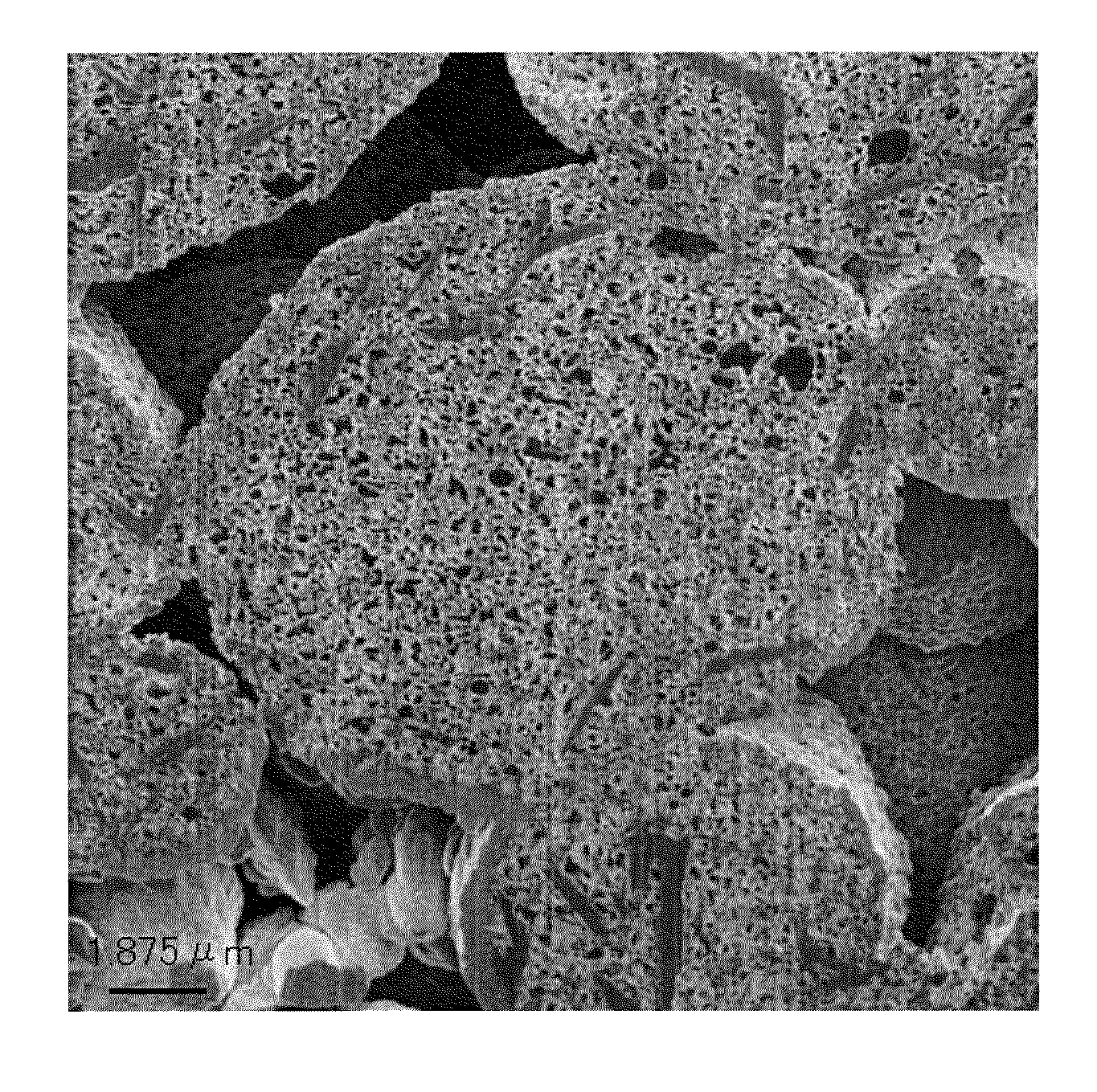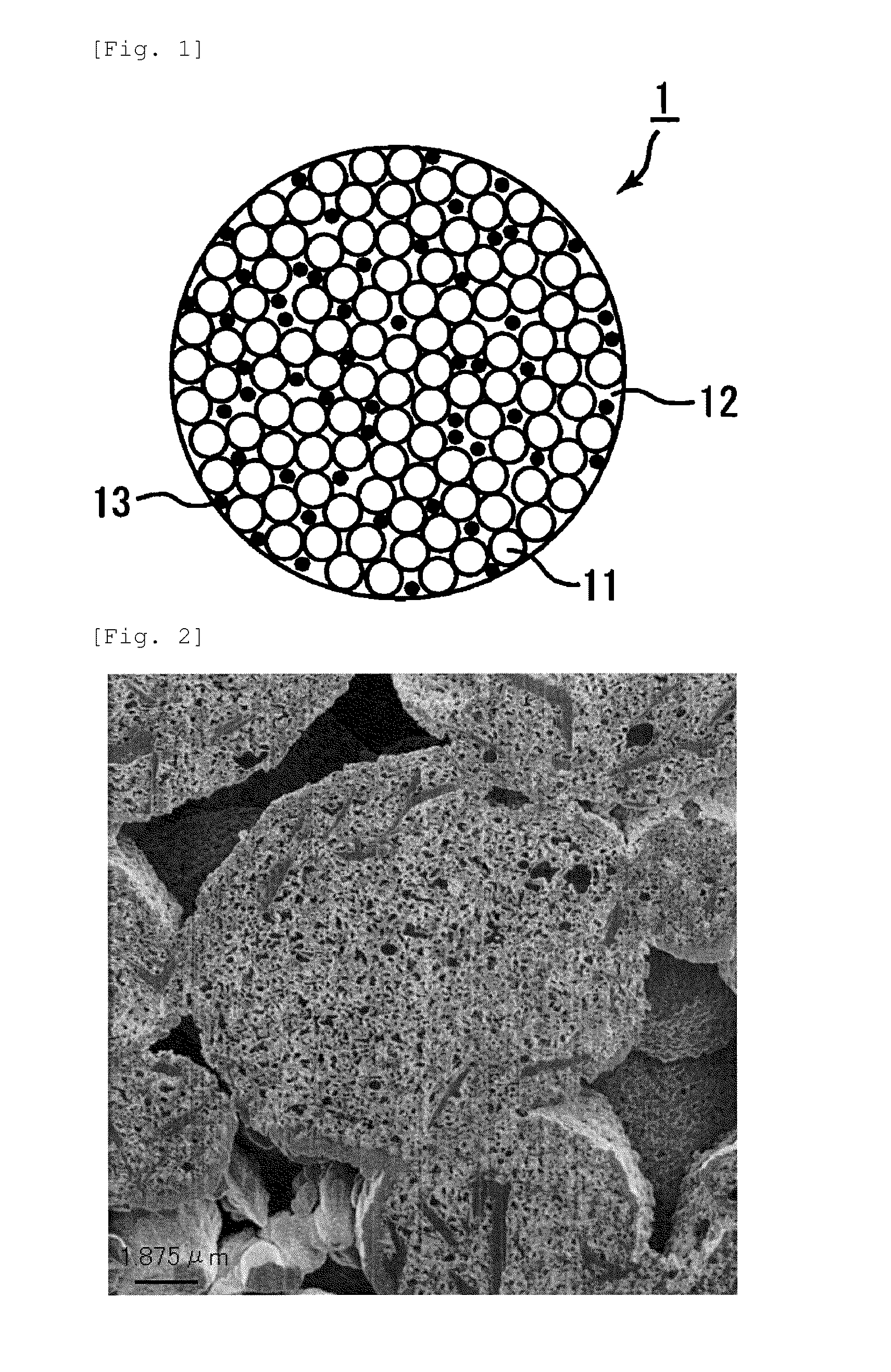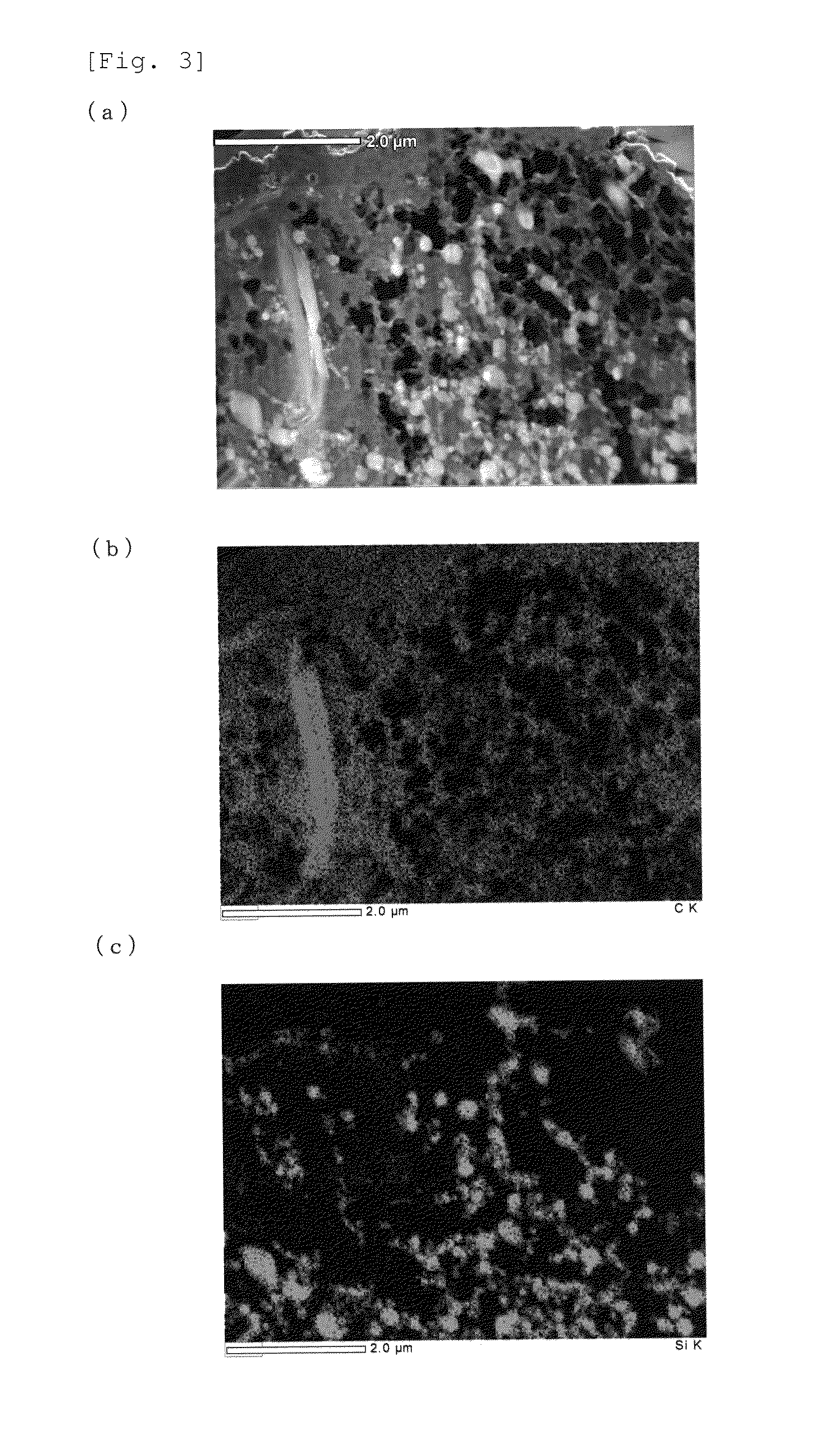Process for producing carbon particles for electrode, carbon particles for electrode, and negative-electrode material for lithium-ion secondary battery
a technology of negative electrode material and carbon particle, which is applied in the direction of electrochemical generators, conductors, cell components, etc., can solve the problems of limited graphite carbon material, electrode material sometimes incurring damage, and silicon material volume change large, etc., to achieve high charge/discharge efficiency and durability, and high suitability for us
- Summary
- Abstract
- Description
- Claims
- Application Information
AI Technical Summary
Benefits of technology
Problems solved by technology
Method used
Image
Examples
example 1
(1) Preparation of Carbon Particles for Electrode
[0070]An oil-phase component was prepared by mixing together and ultrasonically dispersing 100 parts by weight of divinylbenzene as a monomer, 100 parts by weight of n-heptane as a hollowing agent, 5 parts by weight of silicon particles (silicon nanopowder available from Aldrich Chemical Co.) as metal particles and 5 parts by weight of a pigment dispersant (DA-7301, available from Kusumoto Chemicals, Ltd.), following which an organic peroxide was added thereto as a polymerization initiator so as to give a monomer mixture. In a separate procedure, an aqueous-phase component was prepared by mixing together 500 parts by weight of pure water and 5 parts by weight of polyvinyl alcohol as a dispersant.
[0071]The resulting oil-phase component and aqueous-phase component were mixed together, then dispersed by agitation in a homogenizer so as to prepare a suspension. The resulting suspension was stirred, held and polymerized under a stream of n...
examples 2 to 14
[0076]Aside from varying the type and amount of the oil-phase component from among the “particle polymerization composition,” aside from varying the treatment conditions of the polymerized particles and aside from varying the type and amount of the electrically conductive additive and the amount of the binder resin from among the “negative-electrode material composition” as shown in Table 1, particles for an electrode and negative-electrode materials for a lithium-ion secondary battery were obtained in the same way as in Example 1. The carbon nanotube used was multilayer carbon nanotube produced by Showa Denko K.K. The graphite used was SNO-3 produced by SEC Carbon, Ltd.
[0077]FIG. 2 shows an electron micrograph (×20,000) of a cross-section of the carbon particles for an electrode that were produced in Example 14. FIG. 3 shows an electron micrograph of a cross-section of the carbon particles for an electrode that were produced in Example 14 (×100,000; FIG. 3(a)), and also shows EDS (...
PUM
 Login to View More
Login to View More Abstract
Description
Claims
Application Information
 Login to View More
Login to View More - R&D
- Intellectual Property
- Life Sciences
- Materials
- Tech Scout
- Unparalleled Data Quality
- Higher Quality Content
- 60% Fewer Hallucinations
Browse by: Latest US Patents, China's latest patents, Technical Efficacy Thesaurus, Application Domain, Technology Topic, Popular Technical Reports.
© 2025 PatSnap. All rights reserved.Legal|Privacy policy|Modern Slavery Act Transparency Statement|Sitemap|About US| Contact US: help@patsnap.com



